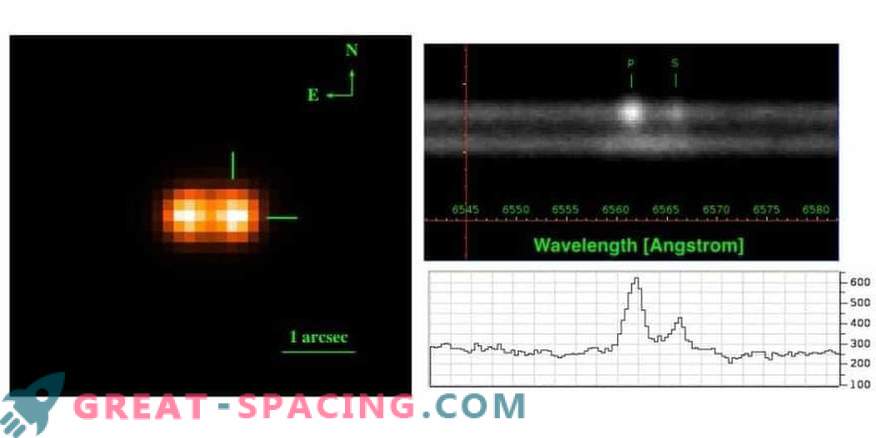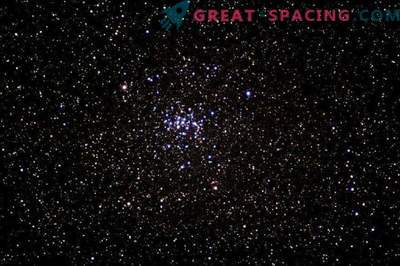
Left: GMOS binary image. The system is indicated by a green tag, where the third object (at a distance of 0.5 arc-seconds) is well resolved. Gemini spectra were performed at a position angle of 90 degrees east of north. Right: GMOS spectra. On the top panel there is an eclipsing binary spectrum (upper) and the third spectrum of a light object (lower). The bottom panel shows the relative flux of the Hα radiation line from the primary and secondary components.
Scientists have found a new eclipsing binary system by analyzing information from archival research and measuring the radial velocity. The object was designated as SDSSJ1156-0207. These are two M-dwarf stars rotating at close range.
M-dwarfs (especially in eclipsing binaries) can help to understand the main parameters of low-mass stars. In the eclipsing binaries, the orbital plane of two stars is practically in direct line of sight to the observer. Therefore, we can measure the mass, radius and effective temperature. To study the system used Sloanovsky digital heavenly review. Later it was characterized using the Gemini telescope spectrometer to determine the radial velocity.
SDSSJ1156-0207 is an extremely weak binary system with double alignment of M-dwarfs with a period of 0.3 days. The main component reaches 0.46 solar radius and 0.54 mass. The second star is 30% of the solar radius and 0.19 mass. Distance between the stars - 0.0077 a. e.
The analysis shows that we have a closed type, and therefore the eccentricity is zero. Moreover, the second star is located higher, which may be due to tidal blockage. The effective temperature of the main star is 3101 K, and the second is 2899 K.
The researchers emphasized the need for further reviews of the SDSSJ1156-0207. They assure that it will help to better understand the mechanism of inflation of the secondary star.











































